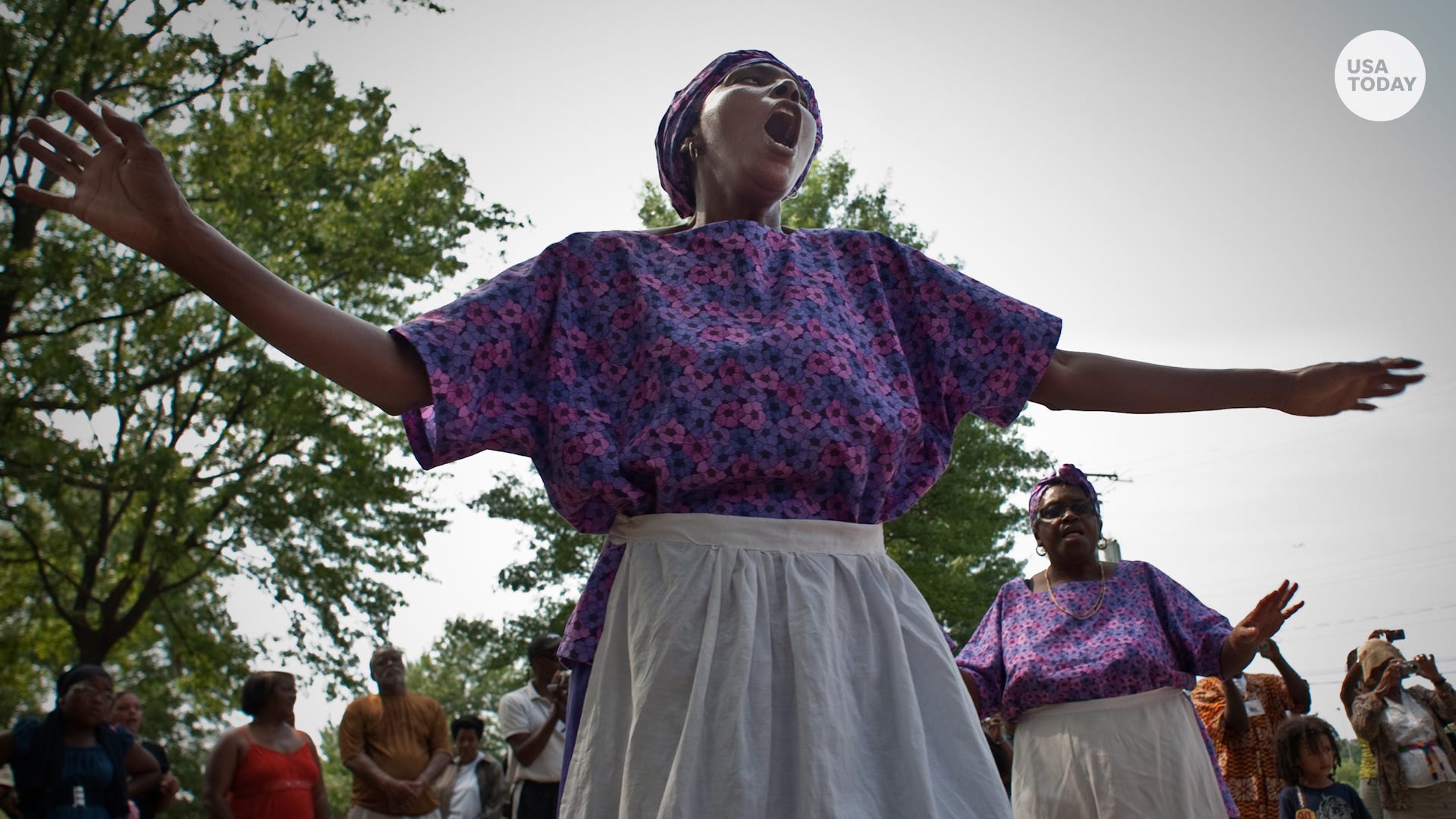Reconstruction is often overlooked. A Smithsonian Black history exhibit says it's an ongoing process

The United States emerged from the Civil War in 1865 with an opportunity. Four million African Americans were promised citizenship and freedom, and the nation had the chance to rebuild after nearly tearing itself apart.
In redefining itself, the U.S. had to answer some fundamental questions about the future: What is freedom? And who gets to be a citizen?
The next 12 years of Reconstruction were spent trying to answer those questions. But this muddled period often has been overlooked and understudied.
The Smithsonian National Museum of African American History and Culture’s new exhibition, "Make Good the Promises: Reconstruction and Its Legacies," focuses on Reconstruction through the eyes of African Americans.
The exhibit, which runs through Aug. 21 in the museum's Bank of America Special Exhibitions Gallery, guides visitors through Reconstruction using the stories of those who lived it. Among featured items are family Bibles, a letter signed by Frederick Douglass and an apron owned by Harriet Tubman. Artifacts from current events, such as Stacey Abrams' election night dress and the sweatshirt Trayvon Martin wore the day he was killed, are included to underscore Reconstruction's connection to modern-day politics and policing.
“It’s not a story that’s constrained to any one racial group or ethnic group, contained to any one period of time,” said Paul Gardullo, one of the museum’s curators. “It’s a period, it’s a process, and it’s a promise. It’s a promise to make America a more just and more perfect union as we continue to struggle and move forward as a nation.”
'After Reconstruction, things went backward'
The notion that Reconstruction failed leads to the period being commonly glossed over or discounted in American literature and history classes, said Eric Foner, historian and Columbia University history professor.
One of Reconstruction's central goals was to establish equality and freedom for Black people following the Civil War. Black men gained the right to vote, families could buy land and communities across the South developed religious and educational systems for Black people.
Sun, sand and civil rights: Uncovering Black history at the beach and beyond
Gullah heritage: Rising seas threaten the culture of a historic Southern community.
But many were eager to keep slavery in place – President Andrew Johnson famously excluded Black decision-makers in drafting Reconstruction policy and offered pardons to white Southerners. Restrictive labor laws, known as the Black Codes, pushed many former slaves back into unpaid labor. White people used lynchings, mass shootings, and voter intimidation as tools to prevent racial progress.
“The fact is, after Reconstruction, things went backward,” Foner said. “And that doesn’t fit the general narrative that some people hold about American history.”
But to judge Reconstruction solely by its shortcomings neglects focusing on the opportunities African Americans seized and the institutions they developed that have shaped the modern United States.
Kinshasha Holman Conwill, the museum’s deputy director and co-editor of the exhibit’s accompanying book, remembers learning about Reconstruction in elementary school. Black men were characterized as bestial and comical.
“When you say something long enough, and in the absence of a counternarrative, it becomes truth to people,” Conwill said.
Conwill and the museum are crafting that counternarrative. The exhibit tells the stories of the Black clergy that emerged from Reconstruction, and the reunions of families separated by slavery. Black men held political positions and voted for the first time. And in one of the period's largest legacies, young Black people formed the basis for America’s public education system.
Black History Month: In the crucible of historic change, I grew up Black and proud
Justice: Will California become the first state to pay Black people reparations?
The 13th, 14th and 15th Amendments – ending slavery, conferring equal rights, and giving Black men the right to vote – were born out of Reconstruction. Some of the most notable Supreme Court decisions, including a woman’s right to abortion and same-sex marriage, were decided by revisiting Reconstruction’s amendments, Foner said.
And as today’s Supreme Court revisits the debate over a woman’s right to abortion, its path follows one that’s hauntingly similar to the years after the Civil War, historians say.
“One of the reasons Reconstruction was abandoned was because of a conservative Supreme Court that little by little whittled away at the rights of people in Reconstruction,” Foner said.
In a recent commencement address, President Joe Biden paralleled today's voting rights restrictions to those from Reconstruction.
“I’ve never seen anything like the unrelenting assault on the right to vote. Never,” Biden said, adding, “This new sinister combination of voter suppression and election subversion, it’s un-American, it’s undemocratic, and sadly, it is unprecedented since Reconstruction.”
'March of progress is not guaranteed'
Reconstruction's contradictions – both giving and taking away Black rights – come together to rebut the American myth of perpetual racial progress.
“Reconstruction disrupts that myth,” said Hasan Kwame Jeffries, associate professor of history at The Ohio State University. “And it doesn’t even stay the same – it gets exponentially worse.”
“Democracy is not guaranteed. The steady march of progress is not guaranteed. And Reconstruction shows us that.”
Contributing: The Associated Press